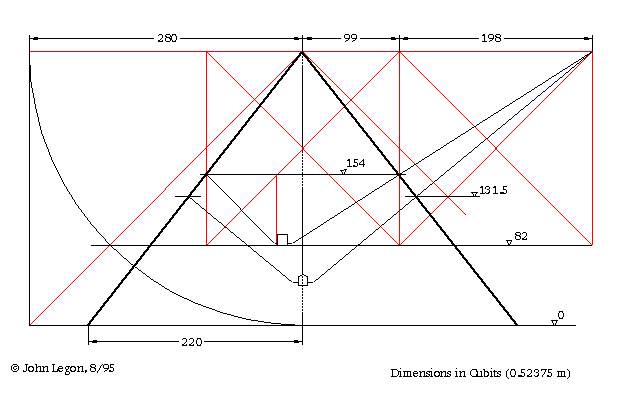
| VENTILATION SYSTEMS | Ducts | Chimneys | Pumping systems | - |
| QUALITY CONTROL | WRECKING THE SYSTEM | - | - | - |
| Dragon | - | Ventilation (DSG) | - | Dragon 45 |

A major design flaw in many dungeons
is the lack of a ventilation
system. This is a shame, since DMs can
have the ability to vary
conditions in different parts of the dungeon
as a function (or malfunction) of the airflow system. The air can be hot
or cold, dry or
damp, pure or putrid, according to the
source and amount of ventilation.
All dungeons consisting of more than a
few rooms a couple of
feet below ground need ventilation systems
if animal life is to survive
(Undead don’t breathe, so they don’t care).
Narrow corridors and
closed rooms become death traps if the
air doesn’t move—which the
early explorers of the Great Pyramids
found out the hard way. To
prevent this, let there be airflow.
VENTILATION
SYSTEMS
Designing a ventilation
system is elementary—the air needs to go
in and the air needs to go out. This is
normally done with air ducts to
every room, though chimneys to the surface
from every room are a
possibility.
Ducts
Ducts are typically in the form of tunnels
in raw rock a few feet
above the rooms. They will obviously be
large enough for the
creatures that made them to crawl through;
thus, orc-built ducts will
let almost anyone through, while gnomish
ducts will be impassable
for all but gnomes and very non-claustrophobic
hobbits.
New duct systems will always have grilles
at each outlet, sometimes just rat-proof, but usually quite massive. There
will be some
way for creatures to enter the system,
since it would require occasional maintenance. Old dungeons may have many
grilles missing,
but may instead have traps in the ducts.
Once some grilles are gone, the ventilation
system will become a
highway for small carnivores. This could
result in animals such as
rats dropping into rooms after fights
to eat the dead and wounded.
Ducts also tend to channel sound from
room to room.
Chimneys
Straight vertical ventilation
shafts are relatively rare, since the
designer would have disliked looters continually
dropping things
down them. Each chimney should have at
least one sharp horizontal
bend to catch missiles, and a drain at
the bend to divert rain, flaming
oil, and the like. If the screens or grilles
are missing, bats, thieves and
other undesirables can use chimneys to
reach deep levels which they
otherwise couldn’t get to
Pumping Systems
If the dungeon is inside a mountain, the
ventilation
system can be
designed to use the wind-caused difference
in pressure on opposite
sides of the peak to force air through
the works. This method requires large and obvious openings that adventurers
are sure to find
and exploit.
Dungeons lacking natural airflow will need
some kind of pump
ing station using fans, bellows, piston
pumps, air elementals, etc.
The mechanical pumps will typically be
run by slaves, waterwheels
or volcanic steam.
Pumphouses will always be protected by
some means. Slaverun, unprotected pumps might appear on upper levels, but
other
more protected types will be on very deep
levels, and are used to
supply air to all of the levels above
them.
QUALITY CONTROL
Dungeon Masters can make use of decrepit
ventilators to give
rooms appropriate atmospheres. Lack of
ventilation
can in some
cases be used as an attack; just picture
the stench of a room full of
zombies after a few weeks. Possible forms
of malfunction include:
1. Poisonous air
2. Too hot/cold
3. Room full of smoke, steam or dust
4. Whistling draft
5. Lamp-dousing draft
6. Strange smells
7. “Booming” air pressure (causes deafness)
8. Room in vacuum
9. Room full of water
10. Room full of sewage
A strong stench will tend to forewarn
mules and elves, and that
the difference between stinking air and
poisonous air (which may be
odorless) is hard for any character to
detect. Miners have been
known to bring small birds with them into
mines, because birds die
from bad air before people and thus provide
them some warning.
WRECKING THE
SYSTEM
Eventually players will realize that they
can ruin an entire dungeon level by stopping the pumps or filling the intake
shaft.
Plan A is to take the pumphouse, stop
the pumps, wait for
everything to die, start the pumps again
and take all the treasure.
Unfortunately, intelligent
dungeon dwellers will notice the lack
of air flow and will try to retake the
pumphouse, forming a temporary
alliance among themselves to do so, since
their only other choice is
to run for it.
Parties rarely survive Plan A.
Plan B is to find the intake shaft, fill
it full of rocks, wait for
everything to die, open up the shaft,
and take all the treasure.
Of course, the intelligent monsters will
try to unblock the shaft or
drive a new one. Most of the nonintelligent
monsters, having
evolved in subterranean settings, would
instinctively recognize bad
air— a n d would also attempt to flee
to the surface.
Because of the difficulty in winning at
vent-wrecking, DM’s need
not worry about it much. Even a party
which can defeat any monster
in the dungeon can’t beat all the monsters
in the dungeon at once.